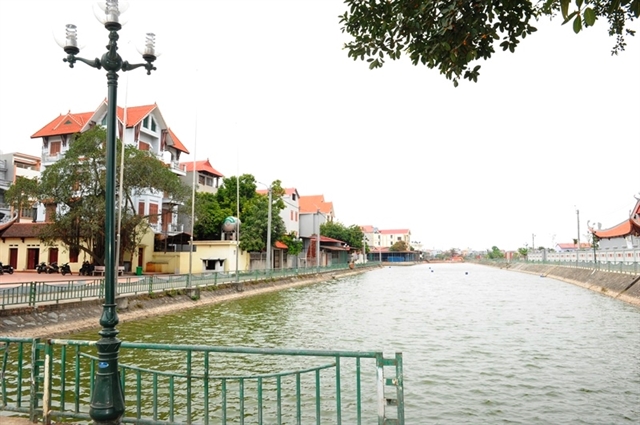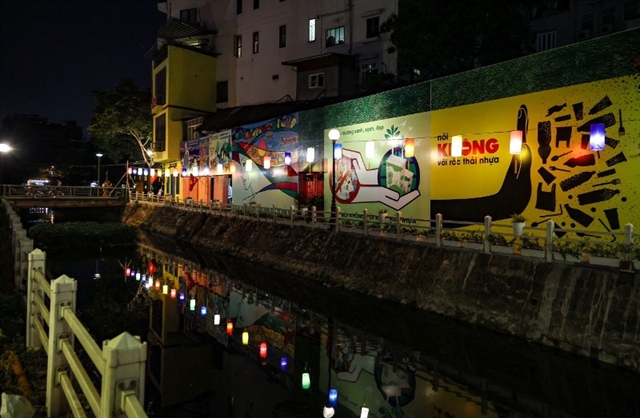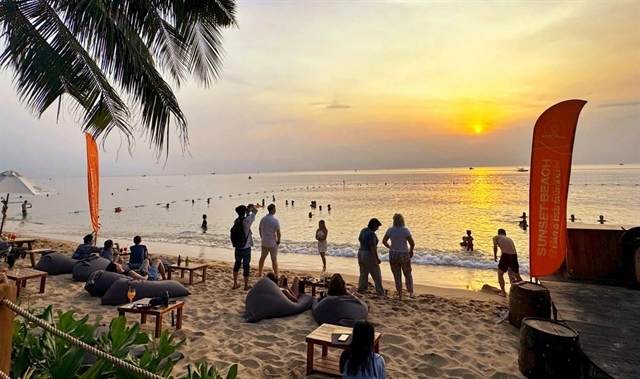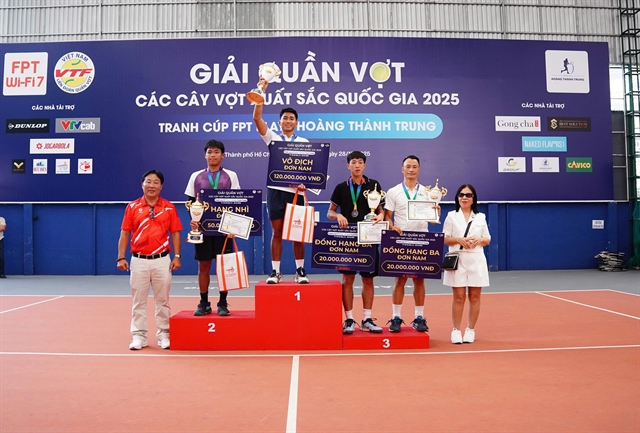 Environment
Environment

Rapid urbanisation have led to increasing demand for housing and infrastructure. Consequently, ponds and lakes across the city have been filled to make room for construction.

|
| A pond in the heart of Vân Điềm Hamlet, Vân Hà Commune in Hà Nội's Đông Anh District. VNA/VNS Photo |
HÀ NỘI — Many Hanoians still remember back about 10 years ago when there were many ponds and lakes in Hà Nội’s inner districts of Cầu Giấy, Nam Từ Liêm, Bắc Từ Liêm, Tây Hồ and Long Biên.
Rapid urbanisation has led to increasing demand for housing and infrastructure. Consequently, ponds and lakes across the city were filled to make room for housing and other construction.
The decrease and disappearance of ponds and lakes in the city has been blamed for serious flooding, environmental pollution and poor living conditions in affected areas.
According to the city’s construction department, there are 125 lakes in Hà Nội’s downtown and some 1,000 lakes in the city’s outskirts.
Đống Đa District used to have up to 30 ponds and lakes. However, over the last 10 years, three ponds around Láng Pagoda and Ba Giang Lake with a total area of nearly 15,000sq.m disappeared.
In Cầu Giấy District, the expanded Nguyễn Văn Huyên Street project killed almost all ponds and lakes in its path. West Lake – the biggest natural lake in Hà Nội’s urban area – has been narrowed from about 550 to 527ha in the last decade alone.
According to a study by the Centre for Environmental and Community Research, until 2015, there were 112 ponds and lakes with a total area of nearly 7 million square metres in Hà Nội’s inner districts.
The lakes are important for air flows and the water cycle, preventing floods and creating the typical urban landscape for Hà Nội.
However, after taking water samples from 30 major lakes in the city, scientists found that six of the lakes were very heavily polluted, eight other lakes were heavily polluted and 11 had signs of pollution due to human activity like directly discharging untreated daily wastewater into lakes, throwing rubbish into the lake and illegally raising fish in the lakes.
Architect Trần Huy Ánh from Hà Nội Architects’ Association said that because ponds and lakes belonged to no individuals, it was easier to fill a pond or part of a lake to serve a construction project rather than land acquisition on residential land or other kinds of land, at least in terms of land clearance and compensation.
“That’s the main reason why so many ponds and lakes in Hà Nội have disappeared,” he said.
Professor Trần Đức Hạ, president of Vietnam Water Supply and Sewerage Association, said that the preservation of ponds and lakes needed a management mechanism and technological solutions.
First of all, Hà Nội needs separate sewage for wastewater and rainwater so that only rainwater can flow into lakes.
There needs to be a quality monitoring system to oversee the quality of lake water regularly.
Only environment-friendly biological products were used to treat lake water and grassroots governments were assigned to take care of the lakes, Hạ said.
Nguyễn Ngọc Lý, founder of the Centre for Environmental and Community Research, said that now, three agencies were usually responsible for caring for a lake.
A water supply and drainage company managed the lake water and the lake bed; a parks and trees management company cared about the trees around the lake; an urban environment and hygiene company dealt with cleanliness around lake banks.
Lý said that the three companies signed contracts with the city’s construction department or People’s Committees of districts or wards where the lakes are located.
The three companies worked separately, and the environmental conditions of the lakes heavily depended on the care and awareness of residents, Lý said, adding that clearer sanctions and co-ordinations in managing the lakes were necessary to preserve the lakes.
Former president of the Institute of Water Engineering and Environmental Technology Trần Hiếu Nhuệ said that Hà Nội could learn from Japan’s experience in which ponds and lakes were managed by the local community.
With national standards and regulations, authorities instructed the community to manage the ponds/lakes and the authorities supervised the lake management. Nhuệ said that Japan’s approach engaged the whole community in caring for lakes and ponds.
Architect and lecturer Nguyễn Nam from the National University of Civil Engineering said that in urban areas, people could easily access lakes as part of public space.
Lakes should be at the centre of any residential areas, he said, adding that the height of buildings near lakes should be limited to creating an open space around the lakes.
“Lakes totally can become typical tourist attractions in Hà Nội,” he said.
Revitalised lakes
In 2017, Hà Nội’s Party Committee issued a resolution on strengthening environmental protection, aiming to improve public awareness and promote environmental activities.
Thanks to the determination from the highest level of the city’s authorities, practical activities have been taken to restore and protects ponds and lakes in the city.
Most recently, at the 17th congress of the city’s Party Committee last October, Hà Nội authorities also affirmed a determination to turn Hà Nội into a sustainable urban area, as well as a smart and modern city with further improved living conditions for people.
Keeping the city green, clean and beautiful is now the determination and responsibility of all agencies and people.
Lâm Du lake in Bồ Đề Ward of Long Biên District is one of the lakes that has seen many differences in the last three years thanks to joint efforts by local authorities and the community.
The lakeshore was embanked, and the pedestrian road was opened around the lake. Residents also grew flowers around the lake and aquatic plants on the water surface.
Bồ Đề Ward People’s Committee chairman Nguyễn Văn Luyện said that together with authorities, residents have kept the lake clean.
“People understand that protecting the lake from environmental pollution is to protect themselves from pollution,” he said.
In public events, people joined decorating the lake with lights and flowers, he said.
As people were not allowed to do outdoor physical activity during social distancing, the lake has become quiet these days. However, for the last few years, it was a popular destination for local people to relax and exercise.
In Ba Đình District’s Trúc Bạch Ward, the 200-metre-long canal from Ngũ Xã 1 Bridge to Ngũ Xã 2 Bridge used to be seriously polluted with stink and blackened water.

|
| The canal from Ngũ Xã 1 Bridge to Ngũ Xã 2 Bridge in Ba Đình District’s Trúc Bạch Ward used to be seriously polluted. VNA/VNS Photo Mạnh Khánh |
However, after the ward raised funds to dredge and embank the canal, it is now a check-in place with murals featuring environmental protection activities.
In Thanh Trì District, a “green weekends” campaign was launched about three years ago, calling on people to clean up the environment every weekend.
Chairman of the district People’s Committee Nguyễn Tiến Cường said that the district paid much attention to clean-up canals, ponds and lakes.
He said that they collected nearly 2,000cu.m of waste around Tô Lịch River running through the district.
Tô Lịch River was once called “a dead river” due to the severe pollution. Now, it has been revitalised.
In the city, many lakeshores have been upgraded to become beautiful landscapes. Many lakes have become ideal places for residents to use as a playground for children and do exercise.
In Dương Liễu Commune of Hoài Đức District, people revitalised a “dying pond,” making it a popular swimming pool for local children.
In 2016, they started dredging the pond, replacing the polluted water with water from drilled wells. They even established a pond management team and set rules to preserve the pond.
Nguyễn Phi Hậu, head of Dương Liễu Commune Swimming Club, said that thanks to the clean pond, they could now teach many children to swim.
The commune is planning to restore two other ponds, so the swimming club can offer swimming classes for more children, Hậu said. VNS




